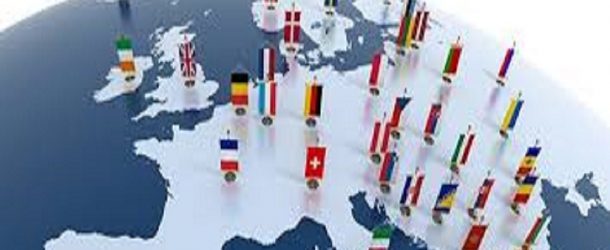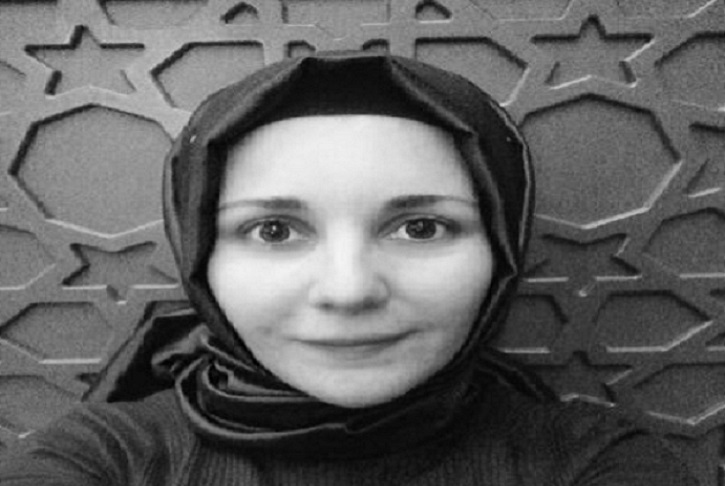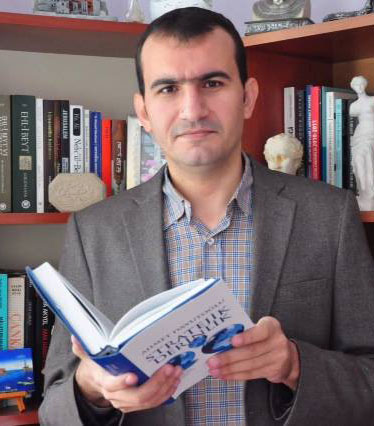Introduction
Before I start with penning the topic of “European integration”, I would like to structure my essay in three categories. First category is the introduction part that sheds light on the basis and historical background of the topic given. Second category is about treaties that formed current EU within the framework of EU integration. And in the last part, I will try to conclude the essay in the context of the essay question.
European Integration
To begin with, the idea of the Europea integration, which can be defined as the goal of “unifying Europe”, was ultimately intended to be realized previously by Napoleon and Hitler’s initiatives in an effective manner, as it produced profound permanent and destructive effects. In fact, although the methods and tools are totally different, it is ultimately necessary to consider all these as European integration initiatives and even to see them as part of the very integration process.[1] These initiatives, and especially the last one, has been a total disaster for Europe. In the end, Europe is divided by an “iron curtain” as the East Europe and West Europe from the center of the continent and classical non-European forces (US and USSR) have become the source of influence in two different camps. This bitter experience has led to the precise abandonment of the method of combining the metropolis with force on the basis of unilateral domination. Thus, it has now begun to consider ways of unifying Europe in the “voluntary associations of equals on the basis of free wills”. In fact, it is based on much earlier assumptions of joining Europe on a voluntary basis, at least from the continental point of view, for “common European objectives”.
In addition to that, European integration is the answer to a historical challenge and can hardly be understood without reference to this challenge – as any answer reveals it’s meaning only if you know the question. For Europe, the challenge was the breakdown of a system of international relations, which had well been in place for centuries, and was indeed born itself as the alternative to the previous system, the middle Ages.[2] In 1623, Emeric Crucé proposed that a parliament of emissaries of the emperors should hold regular meetings to solve the problems among the European states with the majority decision[3]. William Penn also proposed the establishment of a European Parliament in 1693, in the essay “On the Present and Future Peace of Europe’s Peace” and this parliamentarian Russian and Ottoman representatives also participated in discussing and resolving the problems. But the project and its proposal to merge the continent on the basis of all this and other volunteering remained only in the plan of thought; attempts have been made to unite Europe on the basis of continuous unilateral domination until after World War II in real life. The European continent has been the scene of two major wars that are called as the world wars in the name of the power struggle of the European states. Both wars in Europe have caused severe destruction. Along with these wars, continental social, economic, military, political, and even psychological aspects are deeply disturbed, breaking and serious crises.
Although the United Nations was established after the Second World War and commissioned with the mission of maintaining peace at universal level, it will be seen that the post-war period is not at all peaceful. This tense situation made him feel most strikingly in Europe. The bipolar international system that has begun to show its first effects in Europe; even the Cold War of the bipolar system, especially on the continent of Europe. Europe has been broken down into the “East Europe” and “Western Europe” in the middle between the US and the USSR, which are not two “common European” powers, and these two powers have become the domain of influence.
In this divided European table emerging after the Second World War, while Western Europe was trying to meet security concerns under the US patronage of the NATO umbrella, by accepting the bipolarity existing from one side, on the other side, by pursuing a unique “European” structure, continuing its quest to create a ground that can remove the fragmentation of the land in one day. The Western Union, the Brussels Pact, the Benelux Union, the European Defense Community and finally the Western European Union are examples of such initiatives.[4] If a concrete result cannot be obtained from these initiatives; how deeply the devastating wars of memories still affect the European peoples, as in the case of the European Defense Community in France, as well as in some member states, it was understood how vigorously the feelings of hostility and insecurity among the peoples are still continuing. It is not a proper way to build a united Europe on the basis of political and military cooperation in an environment where this spiritual climate prevails; it was assessed that by cooperating in relatively less harsh areas such as the economy, it would be a more convenient way of integrating the positive experiences gained in the political and military fields over time.[5] Following this, concepts for economic cooperation started to be developed.[6]
It is at the same time that the United States is beginning to establish NATO to protect Western Europe against Soviet expansionism, and to begin to embrace Germany’s disarmament policy, with the idea of integrating West Germany into Western defense, in search of initiating economic co-operation in Europe. The fact that West Germany was to be rearmed was a situation where it was never possible for the neighboring France to be met with tranquility. A Germany that was allowed to rehabilitate its industrial infrastructure from one side in France and from the other side started to see more incentive than to give a green light to its armament was again perceived as a serious threat. While the fragmented and inactive state of Europe is an annoying and insulting situation; it was not as likely to be tolerated by France as a possible German threat. With these concerns France has turned to the search for challenges, counter-concepts.
Foundation of the EU Architecture: 1951 European Coal Steel Community
The French endeavors to eliminate Europe’s insatiable situation and the threat that could come from Germany have finally yielded a concrete result. In 1950, Jean Monnet, president of the French Department of Planning, presented his work to foreign minister Robert Schuman, who would rescue France without a word. French Foreign Minister Schuman later announced his plan to pass the literacy as “Schuman Plan” in his own name.
According to this plan, coal and steel, in the form of two important basic warfare, would be left to the power of a joint organization of representatives of countries but of supranational character. It is very meaningful to think that the work that will control coal and steel production here is not an “international” but a “supranational” organization. It seems that the nature of “supranational”, the most basic distinguishing feature of contemporary EU law, reflects a more conscious and functional preference that has been designed from time to time. Thus, in fact, France will cut off a threat from Germany that could come from one side, in a sense it will tightly control Germany, and on the other side it will save Europe from this miserable situation; it would have laid the first foundation stone of a long-term integration process that could be extended to future political areas. In a nutshell, while choosing areas for cooperation to unite the continent, historical wounds such as the economy would have begun from an area with a minimum chance of refreshing.[7] Thus, both countries will become mutually assured in security by delegating a common authority with authority over the two basic warfare powers within each one, as well as cooperating on these two important industrial inputs, benefiting from its positive economic results.
Germany was willing to accept this highly functional plan of France. Because he hoped that the occupation country could become a sovereign equal member of the European family by regaining its sovereignty under the status of the status, and by re-establishing the confidence zone on which it would instigate in this way. It would also be possible to reestablish the unity of the two Germanys, perhaps divided on one side of this trust, if it was possible to gain enough credibility that it would not and will not have any futuristic conception except for the European framework by breeding and decentralization. In the UK there was no objection to this. Because in 1946, the Prime Minister, Churchill had already said in his famous speech that he had to be thrown out by France and Germany to create a partnership for the United States of Europe, keeping his country out of business.[8]
When all these data are taken together, it will be understood that it is a very functional concept, designed in a very clever way with all aspects of the Schuman Plan revealed by France. As a result, this is an event today. Within this atmosphere, in 1951, France, Germany, the Netherlands, Italy, Belgium and Luxembourg signed the Treaty of European Coal and Steel Community (ECSC) in Paris and decided to enter into force in 1952.[9] It is with this agreement that the foundations of the European unity, which today emerged as the European Union (EU) and which expresses a deep and advanced level of cooperation in the history of Europe has never been encountered. But it should be remembered that the issue is yet an economic treaty that only regulates co-operation in two metaphors such as coal and steel.
‘United States of Europe’ Project: 1992 Maastricht Treaty
In 1991, with the disintegration of the Soviet Union, the bipolar international structure ended and a new turn in the international system entered. The ending of a decadent structure, which lasted about half a century since the Second World War and which in this sense had been endowed, pointed to a break in vital importance in many aspects of European integration. This structure was already built mainly on the fragmentation and / or division of the continent. Eastern Bloc is mainly from Eastern Europe under the direction of the Soviet Union; Western Bloc was no other than Western Europe in the sense of the USA. In short, the bipolar international system was based on divided Europe (d). The impacts and impact areas of the blocks outside Europe did not make much sense beyond the tactical / strategic environments and maneuvering areas of these centers. In 1985, as previously stated, the developments in the Soviet Union gave pioneer signs of a systemic change. The European Single Act (ATSA) has already taken place in such an atmosphere and perhaps under the influence of this atmosphere. When it came to the 1991s, there was a systemic change, probably more or less predicted from one side; on the other hand, with the help of the ATSA in 1986, the likely change in the course of the transition had been to a great extent the preparation of Europe (building the infrastructure of the united Europe). By implementing the economic targets envisaged in ATSA, the European Internal Market could be established to a large extent; the dimension of political co-operation of the integration could be included in the legal structure of the European integration process in the form of the Common Foreign Policy and Security Policy and reviving the BAB.
To sum up, the European Integration Movement was largely prepared to mean, in 1991, that the vacuum that emerged with the disintegration of the Soviet Union from its bipolar structure had, to some extent, united and consolidated Europe. This readiness was also put forward by the 1992 Maastricht Treaty (perhaps as an answer).
Integration of the Reinforcement before Eastern Europe Expansion: 1997 Amsterdam Treaty
The Maastricht Treaty was essentially an answer to European integration, the new turn that the bipolar structure of the international system ended. On the one hand, in the direction of the deepening of the integration, On the other hand, a strong step was taken with regard to the enlargement dimension by including members outside Western Europe’s integration in 1995 in the Union. This meant that in the period following Maastricht the need to take new steps in both deepening emerged and came to the brink of an expansion to include Central and Eastern European countries, which became extremely significant and important in terms of European integration in the post-Cold War era.[10] Prior to the Eastern European expansion, the Union signed the Treaty of Amsterdam in 1997, in recognition of its completion and further development, without ending the Maastricht Treaty, in order to continue its effective functioning after this important enlargement.
This Treaty, which entered into force on 01.05.1999, was mainly oriented towards the preparation of the enlargement of the EU in a versatile manner before the Eastern expansion. In this treaty, it is seen that the constituent treaty items of the integration period are renumbered first.[11]
Since the mid-1980s the German federal states, or Länder, have acquired a growing role in Germany’s European policy. In 1992, using the requirement of Bundesrat approval for ratification of the Maastricht treaty as leverage, the Länder forced Germany’s federal government to accept constitutional changes that would give them effective rights of codetermination in European policy. As a result of these changes, Bundesrat approval is now required for further transfers of sovereignty to the European Union (EU) and the Länder are guaranteed an ongoing role in the German European policy process. These constitutional changes were only reluctantly agreed to by the federal government, which claimed that they placed unnecessary restrictions on German European policy and would undermine the ability of the federal government to negotiate within the EU. Academic analysts have generally agreed with this pessimistic assessment, arguing that greater Länder involvement would make the German European policy process even more complex and resulting policies less coherent. They have also argued that the German government will now have less room for maneuver in EU negotiations, making last-minute or on-the-spot deals, such as those made by Chancellor Helmut Kohl at the December 1991 Maastricht conference which saved the treaty and paved the way for Economic and Monetary Union (EMU), much less likely because of the need to secure Länder approval. While some analysts fear a loss of German influence within the EU as a result of these changes, others worry that greater Länder influence could limit Germany’s ability to push for or agree to further integration, thus harming the integration process and the EU overall.[12]
Constitution of the United States of Europe or the Footsteps of the Crisis: 2004 Constitutional Treaty of Rome
Perhaps the most noteworthy step in the European integration process was in the context of the EU Convention. First, it must be noted that the fact that the EU has reached a stage of building a Constitution seems to be very meaningful in terms of the goal of building a “United States of Europe”. Up until December 2009, the Treaty of Rome and the Treaty of Maastricht did not provide for a uniform legislative procedure. Under the treaties at that time, the provisions on legislative procedure and instruments, such as directives, regulations and framework decisions, were highly fragmented.[13]
In addition to that, the EU Constitution is, above all, extremely meaningful and important in terms of the European integration process, even when it is referred to as the “Constitution”. It also pointed to an important step towards integration in terms of the innovations that the EU has made to its structure and functioning.[14] In general, this treaty, first of all, avoided concepts such as “state” or “federal” when describing the EU, and described the EU structure, which the institutional structure and functioning process had organized, to “constitute a society”. This definition is understandable when it is taken into account how much debate the proposals in the preparation process should be addressed as a federal structure of the EU. It was understood that together with the Constitution, it was central regulation to compensate for the democratic legitimacy weakness caused by the weakness of the effective functioning of the European integration and the lack of vivid communication with the peoples.
2007 Lisbon Reform Treaty
Following the rejection of the EU Constitution in France before 2005 and later in the Netherlands, the European integration process had entered a deep crush. Beginning with a multilateral economic treaty in 1951, the European integration project that reached the European Union today is not so far from ending, but has experienced a great deal of discouragement and momentum.[15] Because of the deepening and enlargement perspectives, especially with the end of the Cold War, European integration has gained tremendous momentum. The Maastricht Treaty of 1992, the Amsterdam Treaty of 1997, the Nice Treaty of 2001, and finally the European Union with the 2004 Constitution of the European Union had a momentum in the direction of “United States of Europe”. The name of the last treaty as “Constitution” meant that this momentum about integration was expressed only symbolically. Moreover, as the content, this treaty had never made the definition of “Constitution” useless. The fact that the EU Constitution was rejected by the people of the two constituent states at the time of ratification, at a time when the will of a stronger integration to form a constitution could not be put into effect, has been a real cause of disappointment.[16]
Conclusion
To sum up, in this essay I have tried to analyze the topic of “European integration”. There have been several binding treaties of the Union that I have analyzed step by step. Notwithstanding the fact that the EU has been shaped by several treaties gradually that reinforced and fostered the Union both economically and politically. As mentioned above, the EU has been, without a doubt, an example of successful economic integration that has contributed to peace, security and refinement at the regional level, based on the level of integration achieved today. However, in terms of playing global vital roles at the global level, in the most general sense, to play a vital global role in terms of building and sustaining peace and security, despite its great potential, opportunities and potentials, it unfortunately seems to be ineffective due to its rather serious political and strategic vision. To be more active in international politics rather than regional at level.
Cihad Furkan ELİAÇIK
[1] DEDEOĞLU, Beril, “Avrupa Birliği’nin Bütünleşme Süreci I: Tarihsel Birikimler”, Dünden Bugüne Avrupa Birliği, İstanbul, 2003, p. 20.
[2] MARHOLD, Hartmut, “A Short Account of and Some Reflections on European Integration History”, TAU: European and International Affairs, p. 2.
[3] MERAY, Seha L., Uluslararası Hukuk ve Örgütler, Ankara, 1977, p. 29.
[4] WOYKE, Wichard, Europäische organisationen: eine Einführung, München & Wien, 1995, p. 55.
[5] BORCHARDT, Klaus-Dieter, Die Rechtlichen Grundlagen der Europäischen Union, Heidelberg, 1996, p. 25.
[6] GASTEYGER, Curt, Europa zwischen Spaltung und Einigung 1945 bis 1993, Bonn 1994, p. 54.
[7] BORCHARDT, p. 7.
[8] ÜLGER, İrfan Kaya, Avrupa Birliğinde Siyasal Bütünleşme. Ortak Dış ve Güvenlik Politikasının Oluşumu, Ankara, 2002, p. 50.
[9] BEUTLER, Bengt & BIEBER, Roland & PIPKORN, Jörn & STREIL, Jochen, Die Europäische Gemeinschaft. Rechtsordnung und Politik, Baden, 1987, p. 33.
[10] CAŞIN, Mesut Hakkı & ÖZGÖKER, Uğur & ÇOLAK, Halil, Uluslararası Siyasi, Askeri, Ekonomik ve Sosyo-Kültürel Örgütler, 2017, Der Yayınları, p. 353.
[11] MOR, Hasan, “EU Integration Process”, Gazi University Faculty of Law Journal, Vol. XIV, 2010, p. 521.
[12] BAUN, Michael J., “The Länder and German European Policy: The 1996 IGC and Amsterdam Treaty”, German Studies Review, Vol. 21, No: 2, May 1998, p. 329.
[13] VOERMANS, Wim J.M., “The Birth of a Legislature: The EU Parliament After the Lisbon Treaty”, The Brown Journal of World Affairs, Vol. 17, No: 2, 2011, p. 165.
[14] See: SCHIRMER, Gregor, “BBraucht Europa ein Grundgesetz? – Angela Merkels „Fahrplan“, die Gewalt des Volkes und die rudimentäre Zivilgesellschaft”, Verband für Internationale Politik und Völkerrecht e. V. Berlin (VIP), http://www.vip-ev.de/text253.htm.
[15] See: http://www.eurozine.com/articles/2006-05-18-rupnik-de.html#footNote1.
[16] See: KRÖNİG, Jürgen, “Die alte EU ist tot”, Die Zeit, 21.06.2005.
























































